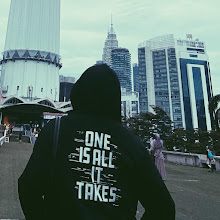A brief guide to some of the key terminology for analysing film in the classroom. Giving your students an awareness of these terms and concepts will help them better articulate their ideas and opinions in discussion and writing, as well as helping to improve their film production work.
Shot type
Long shot - shows background, establishes where you are.
Mid shot — shows torso and some background.
Close-up — head and shoulders, usually used to show emotion. Draws our attention to face or object.
Point-of-view shot - helps us to see the action from a character’s viewpoint and thus empathise with them.
High angle shot - camera looks down on person/object, making them look vulnerable.
Low angle shot - camera looks up at someone/thing, making them appear powerful.
Camera movement
In the same way that framing can be used to enhance our involvement in the film action, the way in which a camera is moved can be used to direct our attention to emphasise a particular viewpoint. Camera movements include:
Panning shot where the camera moves slowly across from side to side from a fixed axis
Tilt shot, where the camera moves up and down from a fixed axis
Crane shot where the camera, mounted on a crane, moves around at a distance above ground level.
Tracking shot where the camera follows the action, moving along tracks laid for that purpose, often pulling backwards from a scene.
Hand held – this technique is often used to suggest a greater sense of authenticity, for example it could be used to be used to provide ‘eye witness’ accounts of situations, linked to the point of view of a particular character or characters.
Mise en scene
This term is used in film to describe what is in the frame and why. There are several areas to consider when talking about mise en scene:
- Setting and props
- Costume and make-up
- Body language and facial expression
- Lighting and colour
Each of these factors combines to give the shot a certain 'look' or 'feel'. What is put in or left out of a shot can make a big difference to the signals we receive about what sort of film it is and how we are supposed to feel at this point. For instance, a simple shot of a tree can be made to look threatening by adding a vulture and a storm and shooting it in darkness. The same tree can be given a very different look by having children playing beneath its sunlit branches.
Lighting
Lighting quickly creates an atmosphere on screen. If it is dark and shadowy we might be made to feel uneasy, as in a thriller; if the lighting is bright we feel happy and confident. The filmmaker can use lighting to draw our attention to a person/object or equally, to hide them.
Sound
There are three elements to a film soundtrack:
Dialogue - this can be used to give us clues as to character and what might happen next.
Music - this creates atmosphere, affecting us on a very emotional level.
Sound effects (SFX) - again, very effective at creating atmosphere. These sometimes do not fit with the image that we are seeing, thus creating a disorientating effect.
Editing
The term editing refers to the changing shots within a piece of film. The speed with which this happens has important role in creating atmosphere. For instance, if there is a car chase on screen, the editing will be rapid, making us excited. A countryside picnic scene, on the other hand, will probably feature slow editing, we relax and take in the details on the screen.
Title graphics
The way in which the title and credits of a film are written and the colours chosen for both them and the background tell us what type (genre) of film to expect. A horror film might employ a red Gothic font, whereas a science fiction film may use a bright green colour on a black background.
**********
ELEMENTS OF CINEMA - MISE-EN-SCENE
Even though many professionals are involved in its creation, the director is the one that oversees the entire mise-en-scène and all of its elements. Not just that, but during the early stages of pre-production, the director or his AD sits down with set designers, prop masters, location managers, costume designers, and scenic artists to determine the look and feel intended.
In some instances, the mise-en- scène is used to evoke lasting feelings throughout the movie and not just for selected scenes. In the German expressionist film The Cabinet of Dr. Caligari (1920), distorted shapes and claustrophobic scenery is implemented to disturb the audience and enhance the horror.
Mike Nichols’ The Graduate (1967) has been praised by its amazing, exciting, and multi-layered visual design. For this reason, the following segments will shed light on many scenes from The Graduate but also from other pictures.
Décor
Décor refers to the decoration or decorative styles, comprising mainly of the set and props used in a movie. Instead of just dressing the set, the director must be savvy to fathom how objects may bear significance in a deeper level, while also emphasizing themes, creating meanings, and provoking thoughts.
An early scene from The Graduate (1967) opens with a close-up of Benjamin Braddock (Dustin Hoffman) alone on his bed. Behind him is a fish tank, which may symbolically represent Ben’s entrapment in a life that he doesn’t want. Later in the movie, Ben finds himself at the bottom of a swimming pool, thus further elaborating on that concept.
In Rear Window (1954), an enlarged photograph placed in the living room offers expositionon the accident that rendered L.B. Jeffries (James Stewart) handicap:
Lighting
Unarguably one of the film elements that has the greatest power to evoke emotions, lightingmust be manipulated by the director to accommodate his or her desires for the movie. The two broad types of lighting approaches are: low-key lighting and high-key lighting.
High-key lighting is often seen in romantic comedies and musicals, encompassing an even lighting pattern and avoiding dark areas in the frame. Everything looks bright with little to no shadow at all. High-key lighting has little dramatic effect, and it is often used in a scene with no tension.
Low-key lighting is often seen in horror movies and thrillers, comprising of a lighting pattern that has both bright and dark areas in the frame. The chiaroscuro (Italian: bright-dark) technique, long used by painters, is characterized by strong contrast, often employed to unnerve the audience.
Note that this terminology is counterintuitive as low-key lighting is high contrast and high-key lighting is low contrast.
Costume
The obvious purpose of costuming is to dress an actor according to his character. Lawyers wear suits, nurses wear scrubs, and a drifter could wear worn out shoes, ragged shirt, and baggy pants.
But, more than that, costuming can also be used to establish someone’s hierarchic level. Regimentals, for instance, bear the status of the person who wears it. And even the color may distinguish an enemy from a friend. In The Good, the Bad, and the Ugly (1966), a comic situation arises when Blondie (Clint Eastwood) heads toward the enemy cavalry that was covered in dust. When the enemy general slaps his gloves on his sleeve, his apparently gray uniform changes to blue.
Costuming may also be used to emphasize a theme. In the first scene at the Taft Hotel in The Graduate, Mrs. Robinson wears a fur coat that makes her look like a predator hunting for her pray. Her coat bears a pattern that resembles the fur of a cheetah. Or could it be a cougar?
Location
In Witness (1985), on the day after declining Rachel’s (Kelly McGillis) seduction, John Book (Harrison Ford) explains to her why nothing could have happened between them the night before. Quiet conveniently, the confrontation takes place in a barn, while Rachel is collecting eggs. The location emphasizes Rachel’s responsibilities as a woman. If they had made love and Rachel gotten pregnant, she would have to carry the baby and eventually give birth. Also, during the conversation, John stands outside the barn, thus being separated from Rachel by the barn’s door. In this case, the door functions as a metaphor of the social and cultural barriers that keeps them a part.
The final confrontation in The Graduate takes place in a church. Ben tries to prevent Elaine (Katherine Ross) from getting married, but he arrives too late. Nonetheless, when Elaine sees him, she runs to him, and they run away. When the couple is cornered by infuriated parents and relatives, Ben starts swinging a cross to avoid them. Stepping out, Ben uses the cross to hold the church’s doors shut.
The prop (cross) and location (church) impose a comment on religious institutions, perhaps implying that Elaine’s parents are trapped by traditional believes and practices.

















.png)
.png)
.png)
.png)
.png)
0 Ulasan